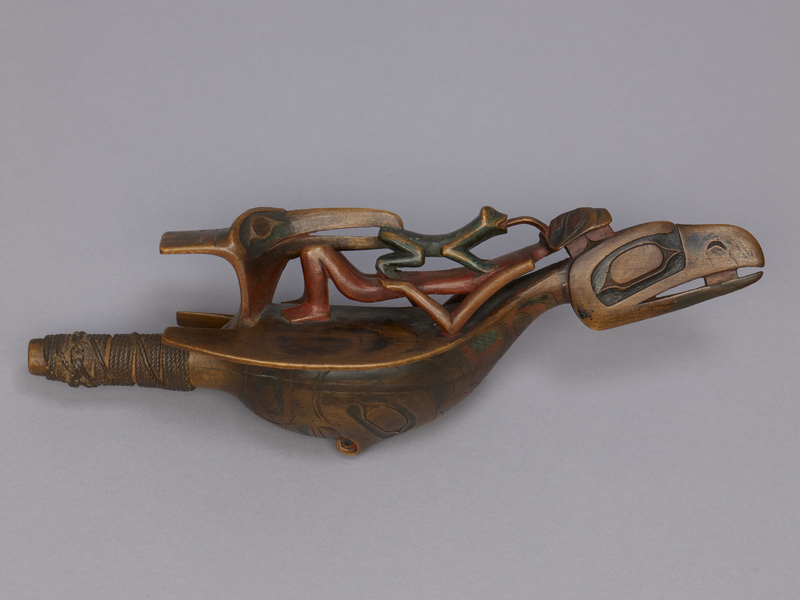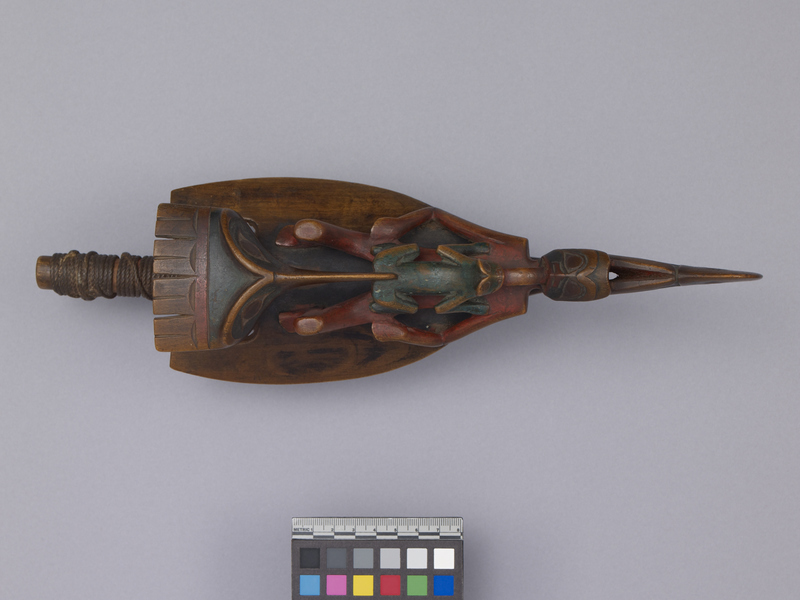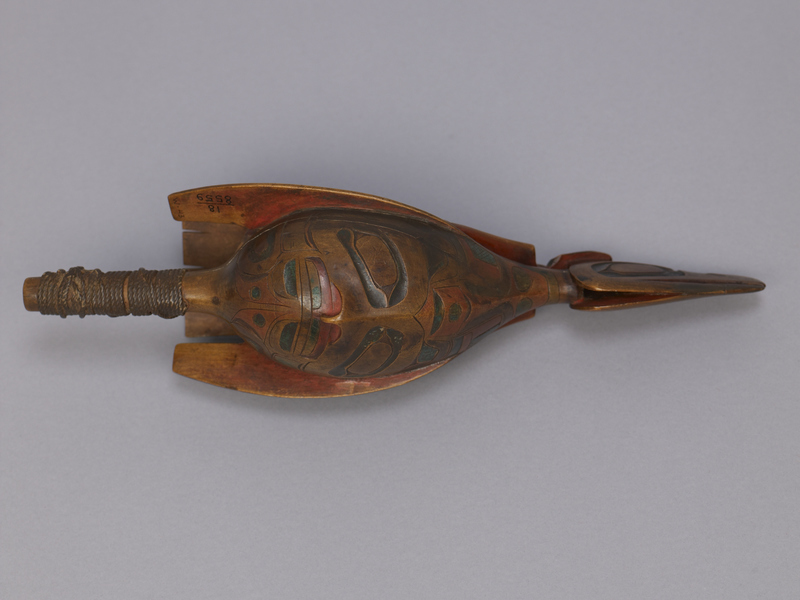Raven Rattle Item Number: 3260/36 from the MOA: University of British Columbia



Description
Raven rattle with red and black painted designs and cord lashings around handle. Raven has wings in a gliding position. On its back is a frog is connected by a tongue to a reclining human (shaman or healer?). The frog is held in the long beak of a bird (kingfisher?) that forms the raven’s tail. The stylized face carved in shallow relief on the belly of the raven. (Interior thought to hold beads?)
History Of Use
Oral histories place the origin of raven rattles among the Nisga’a on the Nass River, from whom their use and manufacture expanded south as far as the Kwakwaka’wakw and Nuu-chah-nulth, and north to the Tlingit. Today such rattles remain widely used in ceremony as well as being made as art objects, and are considered by artists to be a kind of “ultimate test” of the carver’s knowledge of hardwood and skill with a knife. Details like the fine, hollowed planes of the raven’s head, and the human figure only minimally touching the rattle at elbows and feet, show the carver’s effort to thin the wood wherever possible in order to achieve the best sound. Filled with a handful of pebbles, beads, or lead shot, the rattle’s two halves are joined under the wings and along the handle, then secured with a wrapped cord.
Cultural Context
ceremonial
Item History
- Made in British Columbia, Canada between 1850 and 1890
- Owned by Elspeth McConnell before August 12, 2017
- Received from Elspeth McConnell (Donor) on August 12, 2017
What
- Name
- Raven Rattle
- Identification Number
- 3260/36
- Type of Item
- rattle
- Material
- cotton fibre ?, maple wood, paint and stinging-nettle fibre ?
- Overall
- height 11.5 cm, width 10.0 cm, depth 34.3 cm
Who
- Culture
- Tsimshian
- Previous Owner
- Elspeth McConnell
- Received from
- Elspeth McConnell (Donor)
Where
- Holding Institution
- MOA: University of British Columbia
- Made in
- British Columbia, Canada
When
- Creation Date
- between 1850 and 1890
- Ownership Date
- before August 12, 2017
- Acquisition Date
- on August 12, 2017
Other
- Condition
- good
- Accession Number
- 3260/0036